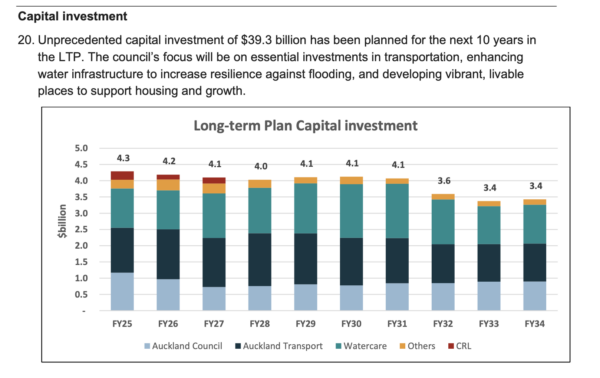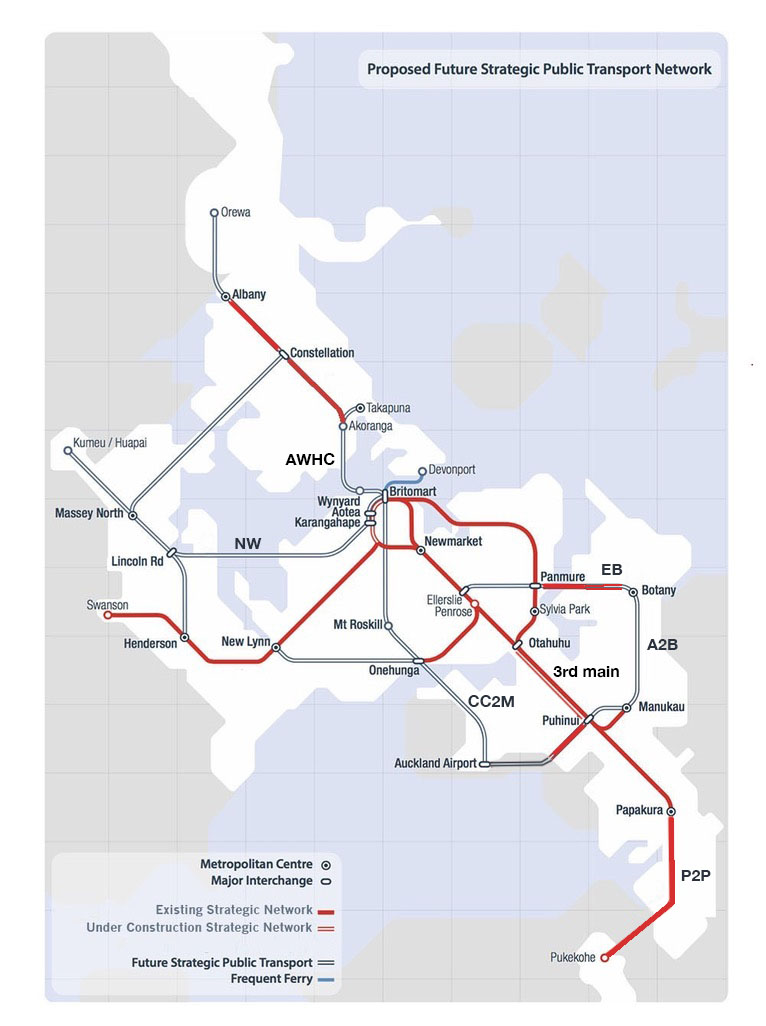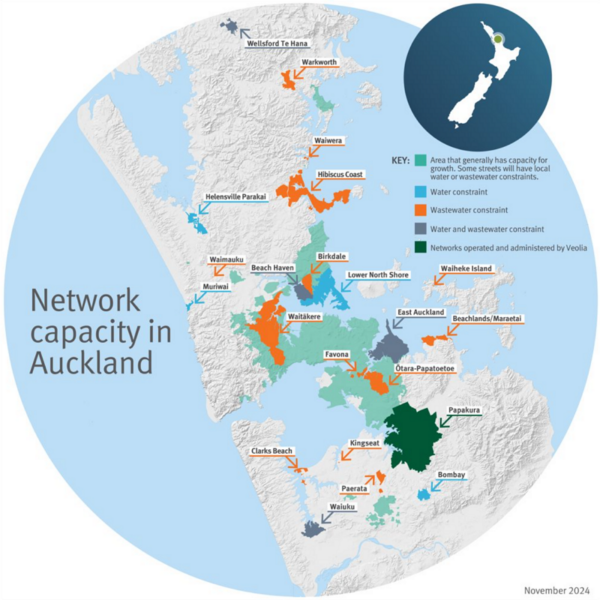Patrick Reynolds is deputy chair of the City Centre Advisory Panel
…and what can we do to increase its success?
Here at Greater Auckland it is axiomatic that cities are, or at least can and should be, forces for good for their inhabitants and host nations. This of course explains their universal existence throughout history, across all cultures and geographies.
Obviously they have their downsides too, so the question really becomes; how to maximise their advantages and minimise the disadvantages. In other words: cities are great, but some cities are better at it than others. Detail matters. The key challenges in cities are pollution, disease, and congestion. The first two are fought with public sanitation infrastructure, the electrification of everything, and public health measures (especially mass vaccination). The last one with urban transport systems, changes in urban form, and especially road pricing, and other forms of traffic demand management.
It is clear from this Auckland budget that most of our infrastructure efforts go into addressing these two areas: transport and water (also note how minor, declining, and nearly over is the CRL capex cost)

So first what do cities do best?
Last month our official public body for thinking about this sort of thing, Te Waihanga, published an evaluation of Auckland, here. It’s full of interesting insight, I’ll include a few charts on transport in the post, but the whole paper is worth a look. Here are the top two conclusions:
Economists have a fancy term for the advantages larger denser cities exhibit: Agglomeration Economies (or Effects), essentially that the greater complexity, choice and competition, accessible to city dwellers makes them more productive. Sure enough Auckland shows these effects, including, efficiency in physical connectivity. This is shown be the fact that despite being the biggest city, covering the greatest area, we drive less than people everywhere else in the country to do all the things, we also, as you’d expect, use public transport more:
Additionally that gap is consistently widening, even as the city spreads further. Suggesting Auckland is developing in the usual city way: needing and using more spatially efficient movement systems, PT walking and cycling, to access more nearby options. This means we need less road space per capita but more PT services:
This also means we spend way less on road maintenance, half in fact, but more on PT…
…and way more on building any new roads:
So in our biggest densest city, building new roads is more expensive, but because we can invest in PT we don’t need to so much. Which in turn saves on road maintenance, but we do need to keep operating that PT. No free lunch, but by choosing to invest more in PT (and other spatially efficient systems), over congestion inducing roads we increase the great urban prize: more valuable efficient density. Which is to say increased density and productivity with a lower traffic congestion cost.
Transport investment policy should be markedly different for cities, rather than one model fits all across the nation.
Furthermore, increasing the density especially on the best public transport routes will increase those efficiencies even more.
All our cities need this this to a degree, but Auckland is anomalous in NZ in both size and density, so this is where the greatest benefit in more city-shaped investment lies.
So how are we doing on plans to expand public transport and density? Or are we still trying to force more urban highways through the city when instead we should be accelerating alternatives more urgently?
Happily there are two very big agglomeration enablers that we are wisely investing in right now, both nearing completion: The City Rail Link (and the rest of the network) and the huge wastewater tunnel, the Central Interceptor (also with network effects). So the questions become: how to get the best value from these investments, and what’s next?
To get the best from them we should enable, plan, and fund more intensity in the areas their networks serve. More on that below.
So what’s next with these systems?
Starting with Rapid Transit, this is the plan, and it’s good. But it shows there’s a great deal still to complete: Electrification to Pukekohe is the latest addition to the network, though the intermediate stations are yet to complete. Then what?
Other than the CRL and the rail rebuild, the Eastern Busway is currently being extended to Botany. Great. A lot of energy and some funding is going into improving the nascent North Western direction also with buses. The Harbour crossing since the change of government now all about traffic lanes, at enormous cost, a pivot that this study doesn’t really support. Upper Harbour (SH18) needs addressing. But the biggest void is the Isthmus and Mangere direction or the CC2M. Since the killing of the woefully off-track Auckland Light Rail separate agency, nothing has been proposed in its place. There is an opportunity and need for leadership from within Auckland on this. This is a route that needs its Robbie or Len Brown.

No good being able to get there if there is no supporting fresh, waste, and storm water infrastructure to support that density. So where’s that at?
Usefully Watercare have just published at network capacity map, and a list of areas and dates for upgrades currently underway:

Putting these these together there is pretty good correlation too:
Now there are plenty of other complications, like flood prone land, which the Council has been very focused on after the 2023 inundation, and social infrastructure. And the always important issue of land value and building cost, which govern the actual likelihood of things being built by the private sector.
But the biggest missing piece in the puzzle is some kind of lead agency, with capital, along with quality urban design and land assembly skills, to spark great development, in the locations unlocked by these huge agglomerative infrastructure investments. The private sector will deliver market rate developments, and do respond to the new infrastructure where it is most profitable and least risky to do so. But to get the highest public benefit, and to internalise public return (economically if not financially) on these huge public investments, best practice internationally is to coordinate the infra with the outcomes. The most obvious example of this sort of coordination is in Transport Oriented Developments (TOD). High quality public transport systems will revalue land around stations by making it better connected, but still usually needs masterplanning, up zoning, and site assembly. The new Transport and Housing Minister did mention this positively in his speech last week.
However the city has just dissolved Eke Panuku, and central government has removed all such powers and funding from Kaianga Ora for this work.
This Te Waihanga report should help concentrate the minds of the city and the government on the economic and wellbeing benefits of prioritising urbanising infrastructure for our cities, and the need to follow through to be sure the best outcomes are delivered.
Post Script. For anyone with any doubt about the welling being costs of trying to densify on a driving dominant pattern, below is a magisterial summary of the where leads by Ray Delhanty of City Nerd.
And note Greater Auckland is hosting Ray in person TONIGHT, details here come along!











 Processing...
Processing...
Basically, new construction should be aiming for twenty floor apartment living. We currently have good quality to approximately ten levels with OCKHAM, and no doubt KALMAR and others could go higher if planning restrictions allowed this to happen.
We need to believe we are a city, not a little village at the bottom of the world.
The CRL will open up incredible opportunities for vertical living, and we need to take advantage of this. It makes economical and environmental sense.
The quarter acre stand alone house with a garden was never appropriate for this climate, and will become more and more problematic with extreme climate influenced weather becoming more regular.
Disclaimer: I was involved in the constructing of The Pacifica, the highest apartment block on the waterfront of the Central City, and often ate lunch sitting on the top, with a better outlook than the skytower.
Apartments are the best way to live, and we have the population to justify this vertical investment, it just needs be done better than the previous decades that have left us with some horrific examples, particularly in the city centre. We now have quality developers, and quality constructors, and now is the time to move our city’s philosophy away from cars and carparks, towards fast trains, electric bikes, and the joy of walking around without feeling threatened by machines.
bah humbug
I think 20 stories is overshooting it – basically, trying to make up for underperforming in the vast swathes of suburbia by then doing skyscraper-style elsewhere. Widespread pockets of 6-10 storeys will easily solve our issues, and even most denser cities (excluding more extreme examples in Asia or the heart of places like New York excluded), such heights are also much more common worldwide.
On a related note, I saw a couple of Simplicity builds that fit that 6-10 storey apartment bill, including one off Mt Wellington Highway, a kilometre north of Sylvia Park. Beastly road environment around it though. We really need to start moving towards a more friendly streetscape at the same time…
Speaking of Citynerd, it is way, WAY, underrated how much density you can achieve with mid rises.
https://www.youtube.com/watch?v=gwu1Cf8G9u8
If you look at all those old villas in our inner suburbs, it seems that even 3 story townhouses will double or triple the density there.
Thanks for sharing that video. This level of density would be great for Auckland, and other NZ cities.
20 storeys is a nightmare. The inner city is just a dump. Apart from some select areas. 6 storeys max creates the humanist urban feel auckland used to have and needs again.
those select areas being where the effort has been put in to deprioritize cars, widen footpaths, add greenery etc.etc; whereas the dumps are the car-sewer-tarmac dominated parts of the central city. that says a lot
I wasn’t really talking about cars. We were talking about. Building height. The areas I was thinking of were the viaduct, and the university
Thanks, Patrick. Looks like an interesting report. As you point out, density is a key element here, and the report usefully explains its impact on “average distance” and PT viability.
“Differences in transport use reflect Auckland’s greater population size and density. Density reduces the average distance that people need to travel to reach their destination and increases the viability of providing public transport services.”
What Bishop got wrong the other day was repeating the “Up and Out” myth. Going “out” misses all opportunities for increasing density. We’ve got so many km of every type of infrastructure to maintain and upgrade, adding more increases the planning, maintenance and operational burden immensely. And high density greenfields development models are not the answer. They simply place many people in the situation of having to travel long distances, increasing our population’s “average distance” and dependence on cars. The alternative, well-placed central development, decreases the “average distance” instead, and enables mode shift through the urban network efficiencies.
It’s a pity that the report seems to take the evidence up to this point, but then doesn’t say it explicitly. Or have I missed the critical bit where Te Waihanga says outright that we must halt expansion?
“What Bishop got wrong the other day was repeating the “Up and Out” myth”
Does he get it wrong, or does he know that while HE is an urbanist, he does hath to triangulate the desires of his party faithful? The art of the possible sometimes means doing the right thing without being too frightening for the opponents…
You are leaving yourself open, by singing that song…
“What is it good for?”, to which the answer is always…
“Absolutely nothing…”
(with thanks to Edwin Starr…)
Auckland, huh, yeah
What is it good for?
Absolutely nothing, uhh
Auckland, huh, yeah
What is it good for?
Absolutely nothing
Say it again, y’all
Auckland, huh (good God)
What is it good for?
Absolutely nothing, listen to me, oh
I’m glad you spotted that I like to use song lyrics and titles in blog titles.
So yes, this is intentional. cf:
https://www.greaterauckland.org.nz/2024/07/15/city-centre-renewal-how-soon-is-now/
I hope the video’s info on pollution (particularly “resuspended particulates on arterials”) dispels the myth that our development pattern should simply be “high rise near the transport hubs”. This is no silver bullet. There’s a mosaic of interventions and shifts needed:
– Planning regulations that allow 4 to 6 story perimeter block housing throughout the isthmus.
– Delivering the cost-effective VKT-reduction plan asap. Wayne Brown had this handed to him on a plate. He stuffed everything up by ignoring it.
– Actively reducing traffic volumes on motorways and arterials by reducing speeds and numbers of traffic lanes.
– Converting the entire city to low traffic neighbourhoods and using the TERP for every transport decision. (It’s not about creating a new plan and then denying that it has funding, you dolts; it’s about changing how you plan and do everything).
I also love these words from the video:
“Every time you see the words ‘balance other considerations’ what you have is, actually, not a policy at all, and you’re still just going to get the status quo.”
The Council’s evidence-based TERP tackled the misapprehension well. However, Council’s earlier folly – siding with AT and arguing the dinosaur line about “balance”, in court, set us up for failure.
We need to vote in some “outcomes focused” Councillors this time, who hold their CEO to account.
And hold the Mayor to account!!!
Saw this above:
Auckland: 36% population growth, 15% vkt growth, 19% lane km growth.
I wonder how this compares with travel time per capita? Willingness to pay (put up with) travel time may not change much with distance travelled – this is why travel increases when capacity increases, and vice versa.
It’s interesting you’ve called out the debacle of the recent history of the CC2M route.
If I were running for council this year I would dust of the 2015(??) AT Light Rail proposal and push that forward on the basis that: 1. We need the CC2M solution in place to grow capacity and density down this corridor. 2. Being surface street based it can be built progressively. Yes that does mean disruption and it also means we’re not waiting, waiting, waiting for the BIG BANG launch as we are with CRL. Te Whatu Ora is out of the way as a home builder so the Sandringham road argument is dead. 3. A significant part of the pre-planning work has been done.
So Council hopefuls? Who will pick this up?
I suspect the light rail well has been well and truly poisoned for a generation. Promising light rail is like promising more consultants studies and millions of dollars for nothing. Great if you are on the gravy train.
Not on my watch. We’ve seen where letting the consultants run everything without sufficient guidance goes; self-serving super-sizing, and an un-fundable mega-project (cf harbour crossing).
There was a perfectly viable scheme ready to go in 2018 that got derailed (sorry) through this process. It’s pretty clear that the solution is not to kick it to central govt to ask open ended questions of the wrong people, at great expense. But for the city to lead with a definite scheme, a la CRL.
Searching now for a city leader to lead on this.
This. Eventually light rail will happen, but no time soon. Projects need to be signed and started with bulletproof contracts (as our incompetent finance minister showed that even a started project with big penalties isn’t enough to stop ideological nutters).
The mistake with LR was handing it to central gov who morphed it into a nightmare of cost. But now it’s too political, so AT will only be able to build bus lanes etc.
We’ll get new bus routes, and hopefully new heavy rail and light metro lines.
Only way I see light rail working is AT expanding Wynyard tram to Britomart, then slowly adding parts towards the Isthmus.
Wayne Brown was almost making a good push for the surface light rail idea again but he needs to make a big thing about it or nothing will happen. He probably doesn’t want to die on that sword. I don’t think a whole generation has been poisoned I’m optimistic it can be resurrected. Think about it, we tried the mega underground version and found it too expensive so back to the realistic and better option in my opinion. We swung too far one way, now swing back.
problem with heavy rail is that its ideologues will start demanding nonsensical routings that make no operational or financial sense, in order to stuff every RTN corridor into one “interoperable” network, or the obsession with loop lines, so they don’t have to face the horrors of making transfers.
i cannot understand the long-term sense of introducing another disconnected transit node to Onehunga; which under the Avondale-Southdown line plan would have an Onehunga north station, 500 meters away from the bus hub, which itself is 300 meters from the current train station. Not at all convenient for transfers to local buses; surely a single major station-interchange would be desirable and ideal; and barring that, a single train station and single bus interchange.
it’s a pity, because the penrose-onehunga-mangere-airport heavy rail option would operationally fit well into the commuter rail network and solve the question of the Southern line looping back on itself